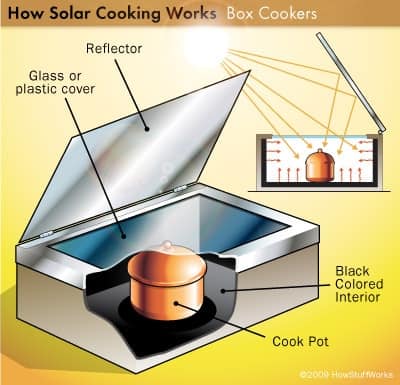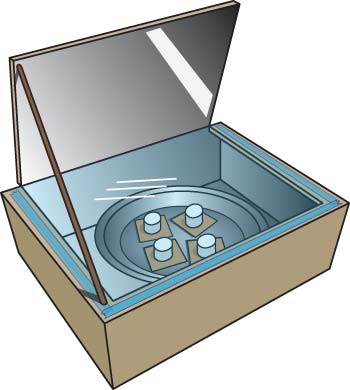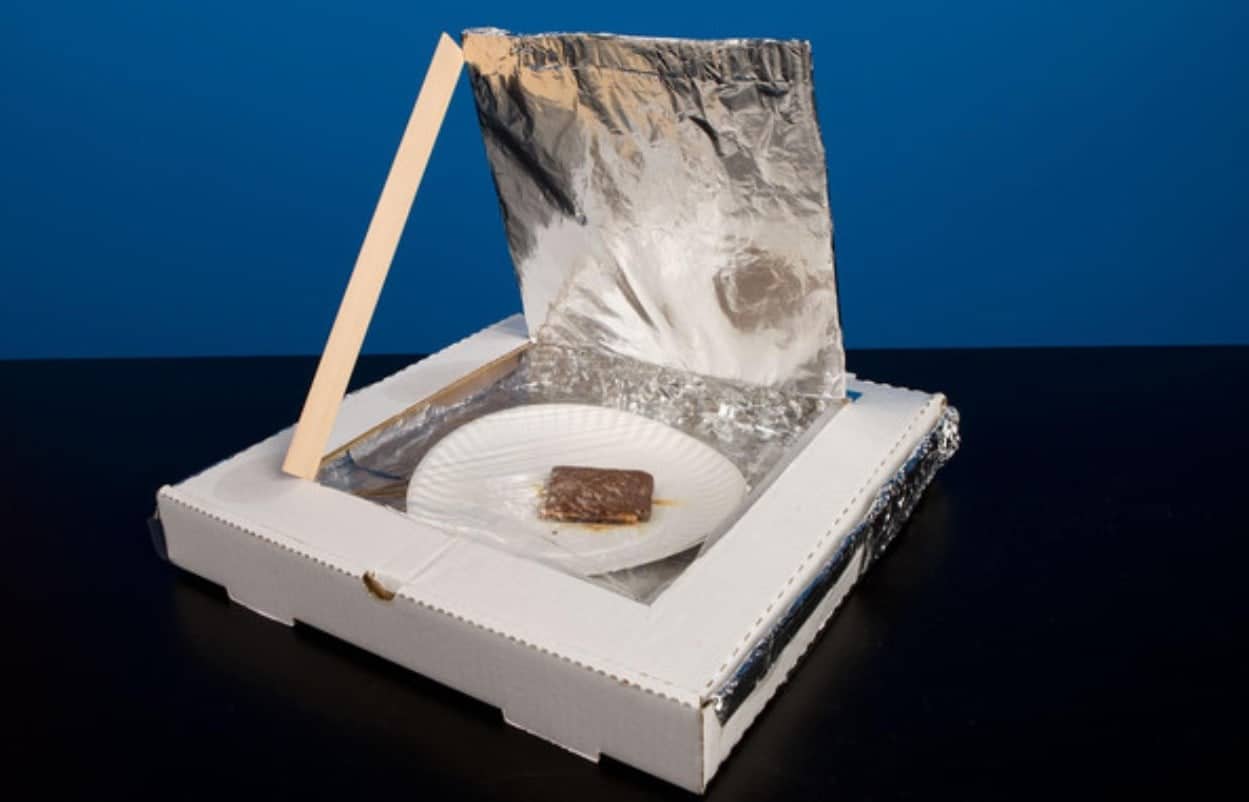Let’s take advantage of our August summer sun and cook some food! Sunlight is very powerful. Using a solar cooker, we can use some of that solar energy to heat up some food!
This is a great project for kids of all ages (K-12th grade) to learn about energy and geometry (angles). For older students, if you build a complex solar cooker (directions at the end), you will learn a lot about engineering and physics. So this project is great for remote learning or home schooling!
Here’s a diagram showing how it works (image courtesy of HowStuffWorks):

Basically, we are gathering as much of the sun’s energy as we can using a black colored (or foil) interior and reflector. This energy is held in by a cover, and it causes the air molecules inside the box to get hotter. This heat then cooks (or melts) your food.
The solar cooker we’ll build will be close to the image above: a box built to help collect the sun’s energy. The instructions we’ll use will be NASA’s, and they suggest making s’mores in your box. S’mores are a good choice because this kind of solar cooker can’t get warm enough to cook bread or vegetables. It can melt chocolate and marshmallows, though!
Here are some instructions from NASA using an old pizza box: https://climatekids.nasa.gov/smores/. The supplies you’ll need are easy:
- Cardboard box with attached lid. Lid should have flaps so that the box can be closed tightly. Box should be at least 3 inches deep and big enough to set a pie tin inside.
- Aluminum foil
- Clear plastic wrap
- Glue stick
- Tape (transparent tape, duct tape, masking tape, or whatever you have)
- Stick (about 1 foot long) to prop open reflector flap. (Use a skewer, knitting needle, ruler, or whatever you have.)
- Ruler or straight-edge
- Box cutter or Xacto knife (with adult help, please!)
When you are done, your solar cooker will look like this:

If you prefer video instructions, PBS Kids has a great video that has you make the same type of solar cooker:
If you’ve had fun with this and want to build more, here are more complex Solar Cooker plans. These plans will let you cook food, not just heat it, but the plans are more complex. Complex doesn’t always mean more expensive (many of them still use basic materials), but they will take much more time and effort to assemble. But the payoff is you can cook vegetables, beans, and even bread!
Happy building and eating!

